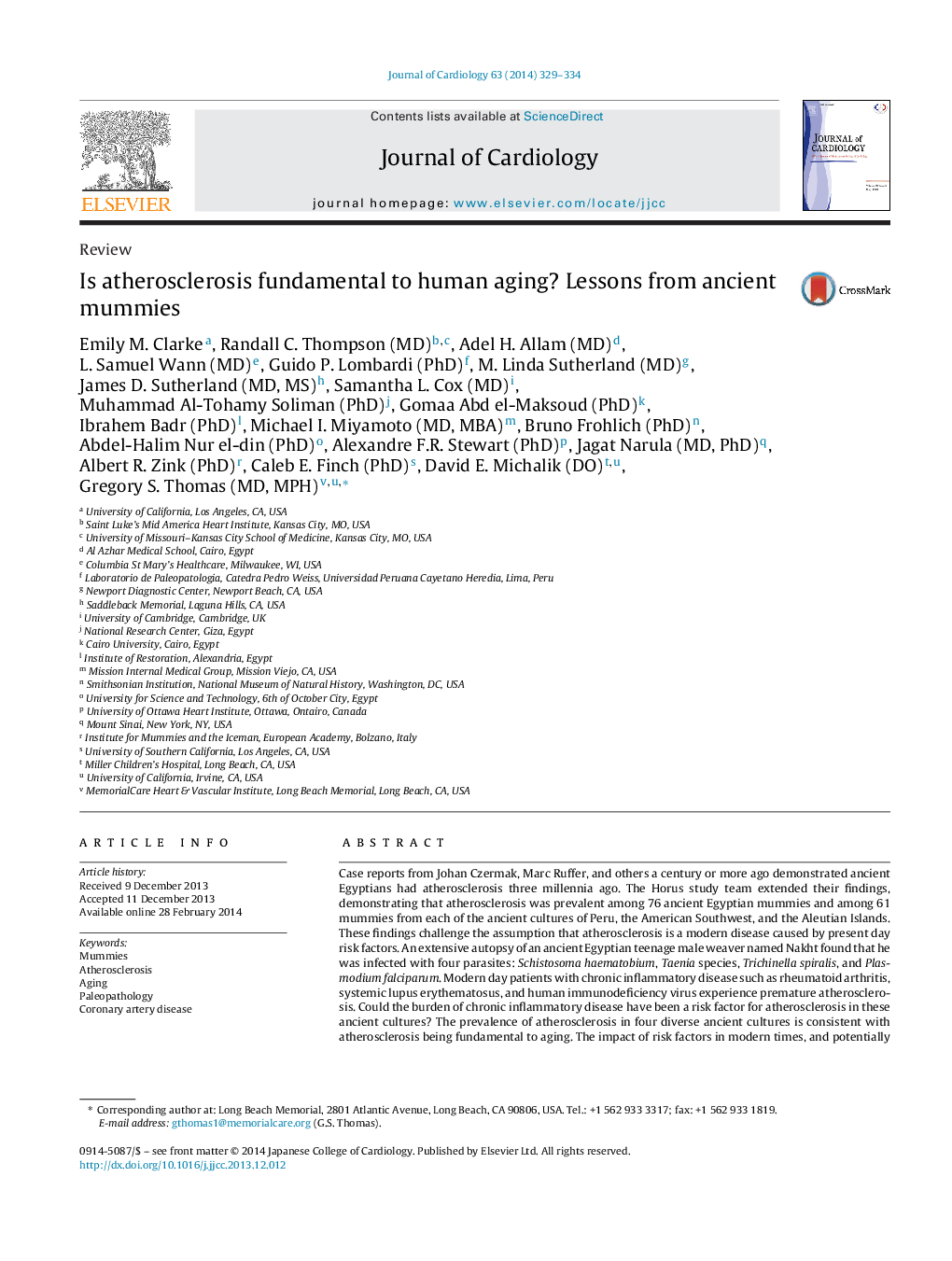| کد مقاله | کد نشریه | سال انتشار | مقاله انگلیسی | نسخه تمام متن |
|---|---|---|---|---|
| 2963036 | 1178526 | 2014 | 6 صفحه PDF | دانلود رایگان |
Case reports from Johan Czermak, Marc Ruffer, and others a century or more ago demonstrated ancient Egyptians had atherosclerosis three millennia ago. The Horus study team extended their findings, demonstrating that atherosclerosis was prevalent among 76 ancient Egyptian mummies and among 61 mummies from each of the ancient cultures of Peru, the American Southwest, and the Aleutian Islands. These findings challenge the assumption that atherosclerosis is a modern disease caused by present day risk factors. An extensive autopsy of an ancient Egyptian teenage male weaver named Nakht found that he was infected with four parasites: Schistosoma haematobium, Taenia species, Trichinella spiralis, and Plasmodium falciparum. Modern day patients with chronic inflammatory disease such as rheumatoid arthritis, systemic lupus erythematosus, and human immunodeficiency virus experience premature atherosclerosis. Could the burden of chronic inflammatory disease have been a risk factor for atherosclerosis in these ancient cultures? The prevalence of atherosclerosis in four diverse ancient cultures is consistent with atherosclerosis being fundamental to aging. The impact of risk factors in modern times, and potentially in ancient times, suggests a strong gene-environmental interplay: human genes provide a vulnerability to atherosclerosis, the environment determines when and if atherosclerosis becomes manifest clinically.
Journal: Journal of Cardiology - Volume 63, Issue 5, May 2014, Pages 329–334
